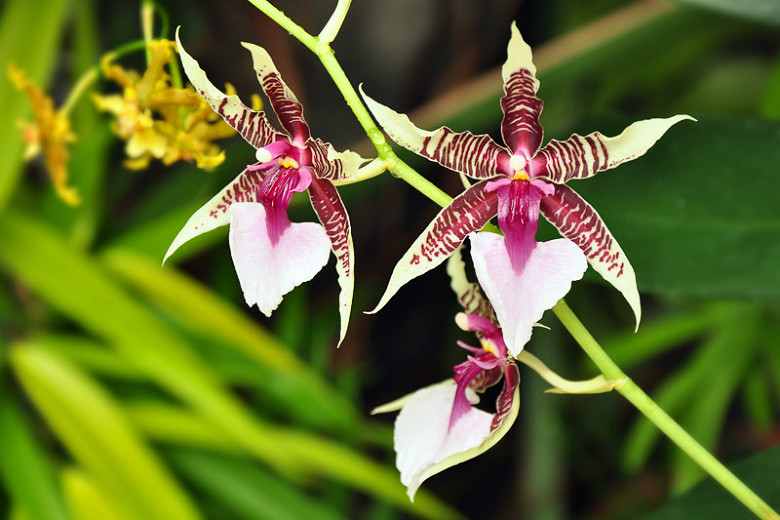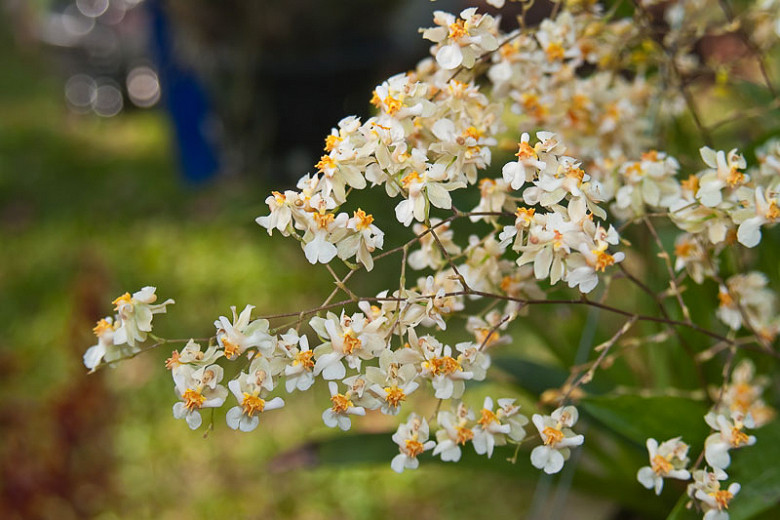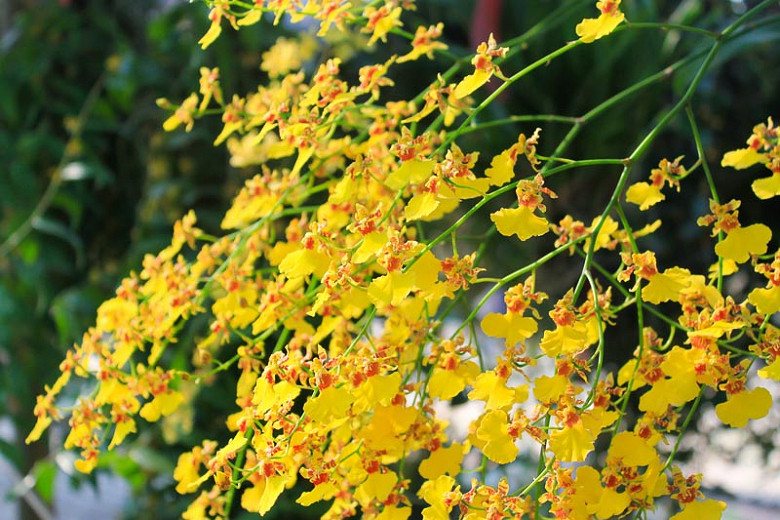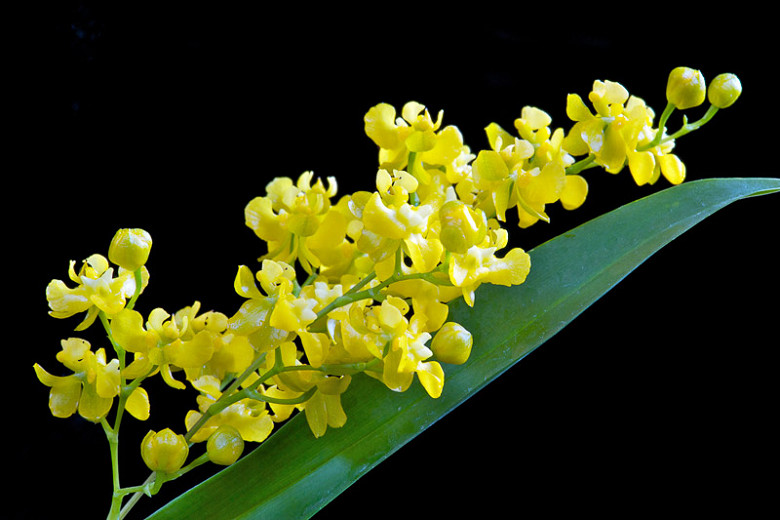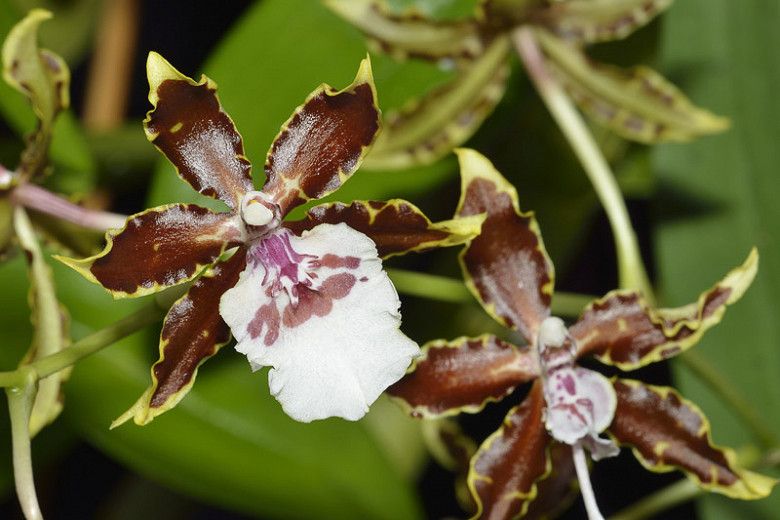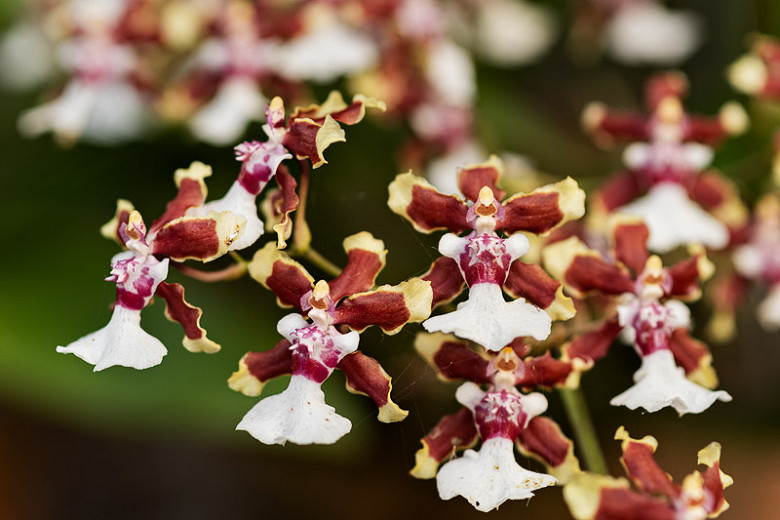Oncidium hastilabium (Lance-Head Lip Oncidium)
Oncidium hastilabium (Lance-Head Lip Oncidium) is a creeping epiphytic orchid boasting erect to arching inflorescences, up to 5 ft. long (150 cm), bearing numerous fragrant, long-lasting flowers. Blooming in the late spring through fall, the large star-shaped blossoms, 3 in. across (7 cm), feature pale green petals and sepals barred with dark-red or purple lines.
Oncidium hastilabium (Lance-Head Lip Oncidium) is a creeping epiphytic orchid boasting erect to arching inflorescences, up to 5 ft. long (150 cm), bearing numerous fragrant, long-lasting flowers. Blooming in the late spring through fall, the large star-shaped blossoms, 3 in. across (7 cm), feature pale green petals and sepals barred with dark-red or purple lines. White in its upper portion, the halbert-shaped lip is purple at the base. The spidery flowers arise from an oval, compressed pseudobulb, 4-8 in. long (10-20 cm), carrying usually 2 leaves, 14 in. long (35 cm). Native to Colombia, Ecuador, Peru, and Venezuela, Oncidium hastilabium is a warm to cold growing orchid species found in forests at elevations of 2460-7200 ft. (750-2200 m).
- Grow in a fine-grade, bark-based epiphytic orchid compost. Provide bright filtered light and good ventilation.
- Needs a minimum night temperature of 50-64°F (10-18°C) and a daytime temperature of 64-71°F (18-22°C).
- Maintain adequate humidity (40-70%) for most of the year by setting the plant on a tray of gravel, partially filled with water, so that the pot never sits in the water. The higher temperature, the higher the humidity should be.
- Water regularly throughout the growing season, but allow the compost to become a little dry between waterings. Reduce watering to once a month or less in winter.
- Do not overwater. Oncidiums are prone to rot.
- During the growing season, feed with a weak, diluted orchid fertilizer every second or third watering. Mist regularly for high humidity.
- Reduce watering in winter and allow a 4-week period of daytime temperature around 50°F (10°C) to encourage flowering.
- Propagate by division when plants are large enough to be divided into clumps of 2 – 3 pseudobulbs and overflowing the pot.
- Once the flowers have faded, remove the spent flower spikes.
- Oncidiums do not like root disturbance and should only be repotted when either the compost becomes broken down or the pot becomes too small for the new growth. They like to be slightly underpotted in a very free-draining bark-based potting media. The best time for repotting is the period when new sprouts reach a size of 2 in. (5 cm) and begin to grow their own roots.
- Generally disease free. Keep an eye out for aphids, glasshouse red spider mites, and mealybugs.
- Native to Colombia, Ecuador, Peru, and Venezuela.
Tip for reblooming
- If a plant is large and healthy but does not produce flowers in a reasonable time, then move your plant to a brighter location or a location that gets an hour or two of the early morning sun.
Requirements
| Hardiness | 9 – 12 |
|---|---|
| Plant Type | Orchids |
| Plant Family | Oncidium – Dancing Lady Orchids |
| Exposure | Partial Sun |
| Season of Interest | Spring (Late)Summer (Early,Mid,Late)Fall |
| Height | 4" – 8" (10cm – 20cm) |
| Water Needs | Average |
| Maintenance | Average |
| Soil Drainage | Well-Drained |
| Characteristics | Fragrant, Showy, Evergreen |
| Garden Uses | Patio and Containers |
